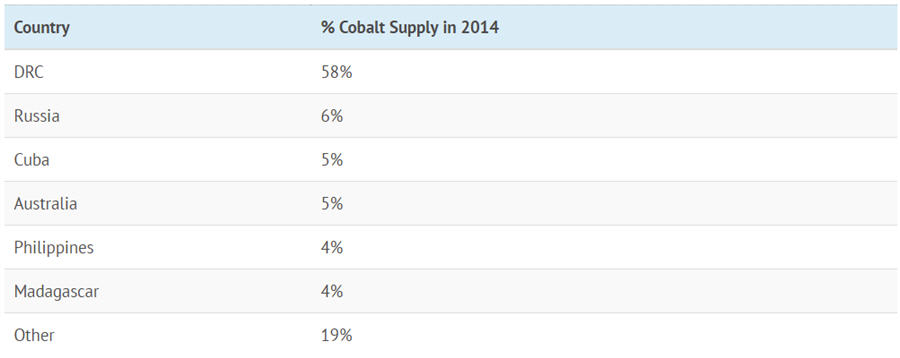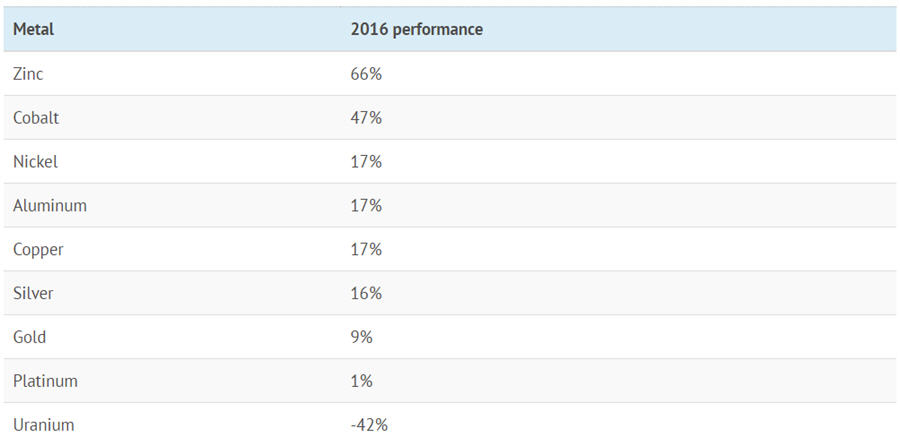Every once in a while, a previously underappreciated metal rises to prominence.
Several factors can cause this to happen: new technology, changing consumer preferences, supply constraints, or skyrocketing demand can all bring an unknown metal to the forefront of discussion.
Cobalt could be the latest metal that fits this description. It’s a crucial metal to the boom in lithium-ion battery demand, but it also has an increasingly precarious supply chain that could be very volatile moving forward.
Today’s infographic comes from eCobalt Solutions, a company focused on providing ethically produced and environmentally sound battery grade cobalt salts.
It presents the investment case for the relatively unknown metal.

With the green movement in full swing, there is compelling evidence that cobalt could be the next relatively unknown metal to rise to prominence.
Here are the top 10 reasons that investors should look at cobalt:
1. Cobalt is one of the few metals used for superalloys.
Nearly 20% of all cobalt is used for superalloys – a class of high-tech metals that originally emerged to suit the high operating temperatures of jet engines.
There are three main superalloy types:
Their use has extended into many other fields – and today, superalloys are used in all types of turbines, space vehicles, rocket engines, nuclear reactors, power plants, and chemical equipment.
2. The green economy runs on cobalt.
There are many types of lithium-ion batteries, but the vast majority of li-ions sold today use cobalt in some capacity.
In fact, by 2020 it is expected that 75% of lithium-ion batteries will contain cobalt. Why? It’s because cobalt is the most important metal for increasing the energy density of lithium-ion cathodes.
3. …And green uses such as EVs are driving the upwards trajectory of cobalt demand.
By 2020, almost 1/5 of cobalt demand will stem from electric vehicles.
Total refined cobalt demand:

Source: CRU
“Cobalt’s demand growth profile remains one of the best among industrial metals peers. Its exposure to rechargeable batteries continues to play a crucial role.” – Macquarie
4. Getting cobalt is the hard part.
98% of cobalt is produced as a by-product of copper and nickel mines. The problem? If copper and nickel production isn’t growing, then more cobalt isn’t mined to meet demand.
5. Why not find more cobalt?
It’s easier said than done. The vast majority of the world’s cobalt lies in risky regions like the DRC.

Source: CRU
6. And so supply can tighten…
Chemical cobalt – the kind used in batteries, is expected to fall into a growing deficit over the next few years. By 2020, CRU expects that deficit to be at least 12,000 tonnes.
7. Meanwhile, the U.S. government definitely doesn’t have any strategic stockpiles.
According to the U.S Defense Logistics Agency, the government sold off cobalt all the way up until 2008. Now there is only 301 tonnes left in strategic stockpiles.
8. Cobalt was one of the best-performing metals in 2016.

9. Cobalt prices have been rising, but they are nowhere near all-time highs yet.
All-time highs for cobalt prices happened in 2008, after the DRC government placed restrictions on export of ores and concentrates. For a brief stint, cobalt prices even exceeded $50/lb.
The current price? Roughly $16/lb.
10. Many experts predict the cobalt market to be interesting to watch in 2017:
“Just how much cobalt is in stockpiles in China is the Million Dollar Question. Clarity here can materially affect the cobalt price.” Chris Berry, House Mountain Partners, LLC
“The refined cobalt market will fall into a 3,000 tonne deficit this year following seven years of overcapacity and oversupply. CRU anticipates prices to increase onward into 2017…” – Edward Spencer, CRU Group
“With this growth will come further disruption to the traditional market structures that have developed in cobalt over the last 30 years. In short, a new, more secure supply chain for the modern era will need to be created, a task that includes new mines, new refineries, and a more transparent supply chain.” – Andrew Miller, Benchmark Minerals